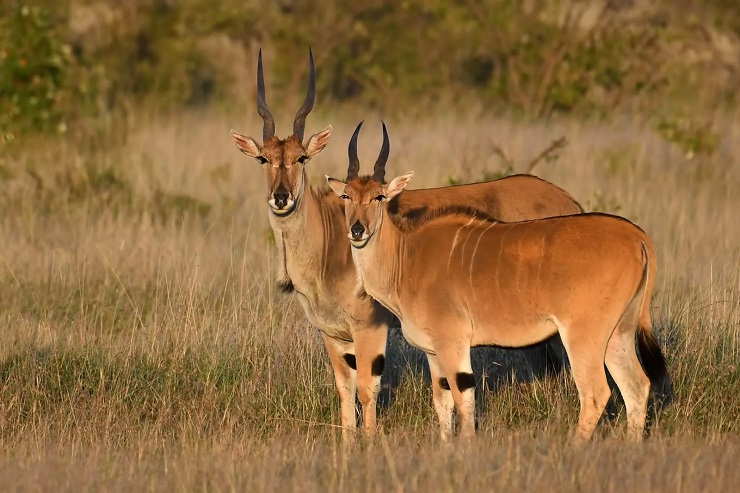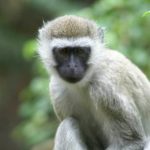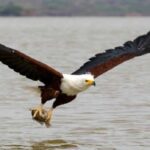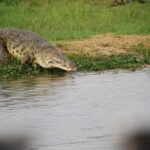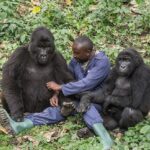The common eland (Taurotragus oryx), also known as the southern eland or eland antelope, is a savannah and plains antelope found in East and Southern Africa The Common Eland is a species of the family Bovidae and genus Taurotragus, which was first described by Peter Simon Pallas in 1766.
An adult male is around 1.6 meters tall at the shoulder while females are shorter by about 20cm. The male Eland weighs up to 942 kg with an average of 500–600 kg and 350 kg with an average of 340–445 kg for females). The eland is the second largest antelope in the world, being slightly smaller than the giant eland.
Both male and female Common Elands have spiraled horns and a pendulous dewlap that begins at the throat (rather than under the chin, as in the Giant Eland). Common Eland range widely across Southern and East Africa and are associated with woodland and woodland-savannah, although they are relatively flexible in their habitat preferences. They form herds of up to 500 animals, but are not territorial, it uses loud barks, visual and postural movements and the flehmen response to communicate and warn others of danger.
The common eland prefers habitats with a wide variety of flowering plants such as Savannah, woodlands and open montane grasslands avoiding dense forests. Common elands are mainly herbivore with its diet primarily being grasses, plant shoots/leaves and will dig in the ground for tubers, roots and bulbs. The common eland is able to survive without water, as long as it feeds on a sufficient amount of succulent, moisture-rich food.
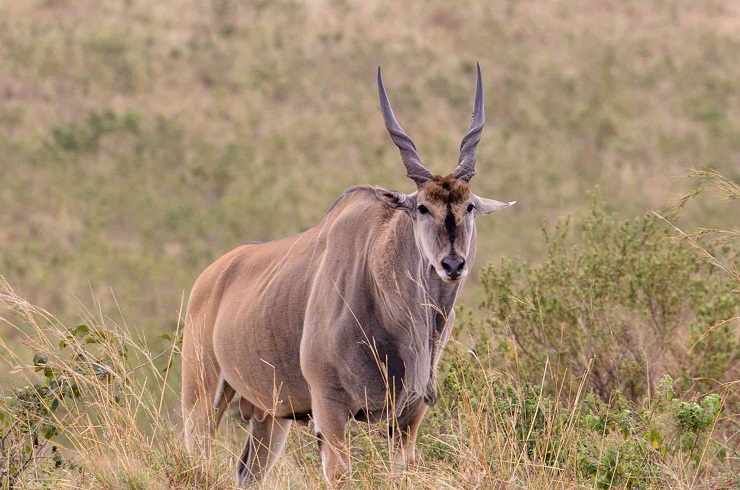
The common eland is a social antelope, often forming open and fluid herds of 25 to 60 animals, and occasionally congregating in groups of over 1,000, particularly during the rainy season. Mature males generally form herds, as do mature females, and young common eland congregate in nursery herds, within these herds, a hierarchy exists, which determines access to things such as receptive females (if a male), and feeding sites (if a female). Males are not territorial, but will become possessive over females that are receptive to mating and matings are most common during the rains, resulting in a peak of births nine months later at the end of the dry season. Each female bears a single calf, which remains hidden in vegetation for the first two weeks of life. Common eland calves grow remarkably quickly, due to the richness of the nutritious eland milk, and they soon join a nursery herd.
Common eland are known to have lived for up to 25 years.
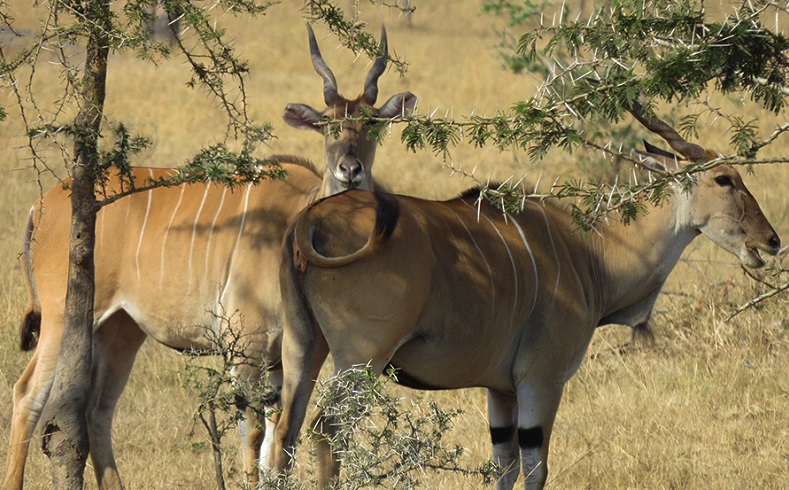
This species is now extinct in Burundi and declining in some parts of its range, this is because of the value of the value of this animal to trophy hunters, poaching can be a significant problem in some areas, although habitat loss is currently the greatest threat, although Common Elands are still widely distributed and well represented in national parks and are even semi-domesticated as exotics in several countries.
The eland is native to Angola, Botswana, the Democratic Republic of the Congo, Ethiopia, Kenya, Lesotho, Malawi, Mozambique, Namibia, Rwanda, South Africa, South Sudan, Swaziland, Tanzania, Uganda, Zambia and Zimbabwe.
In Uganda, the eland is mainly found in Lake Mburo National Park though it also exists in Kidepo Valley National Park and Piane Upe Wildlife Reserve. This great Antelope species should be among the special ‘look-outs-for’ in one’s Wildlife Adventure Safari with Lakato safaris.
Try Our Top Safaris

